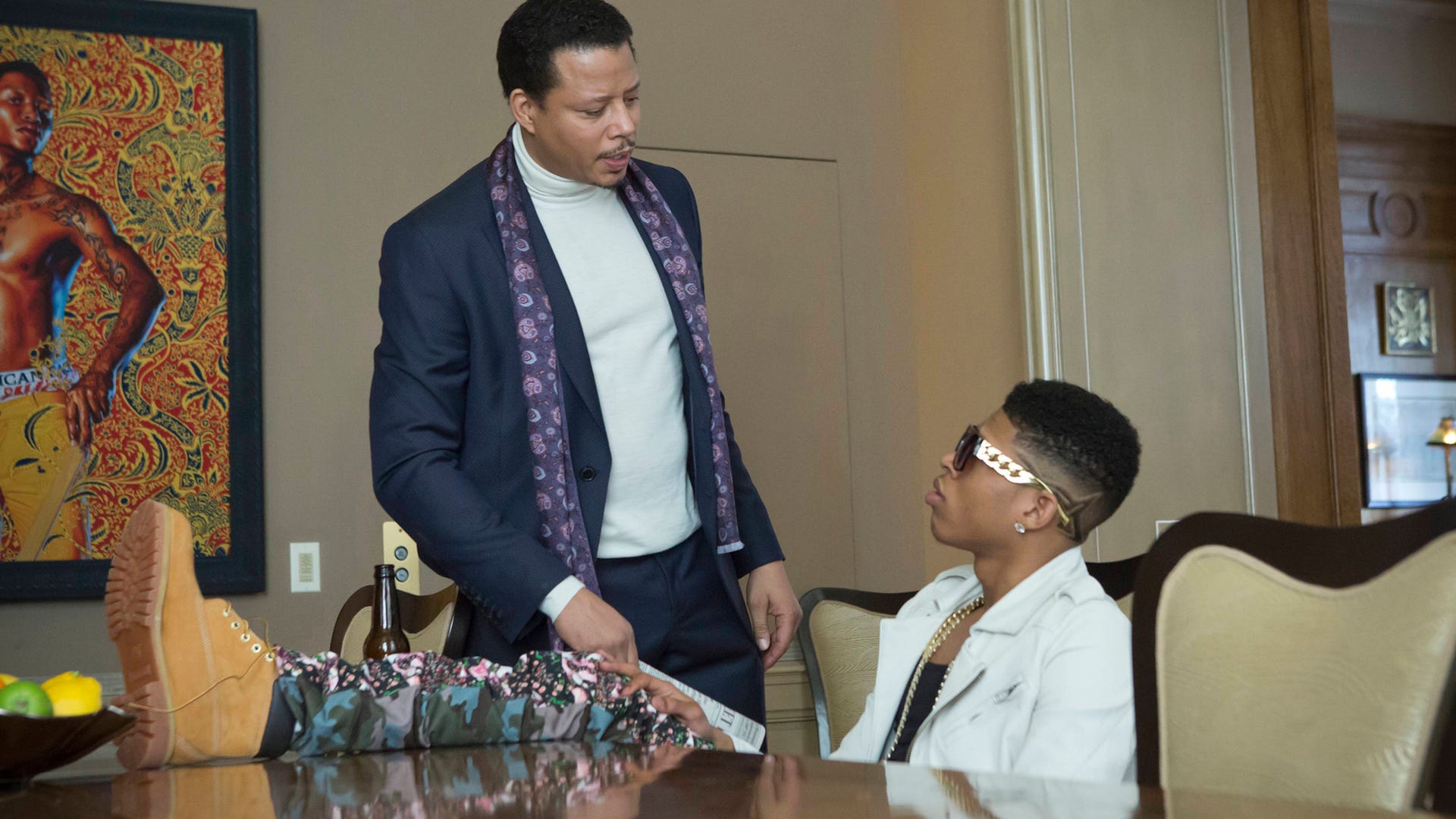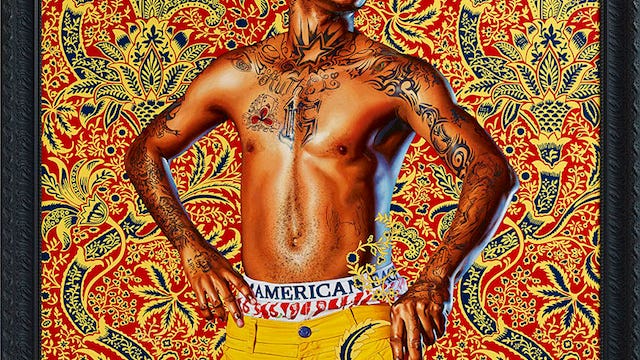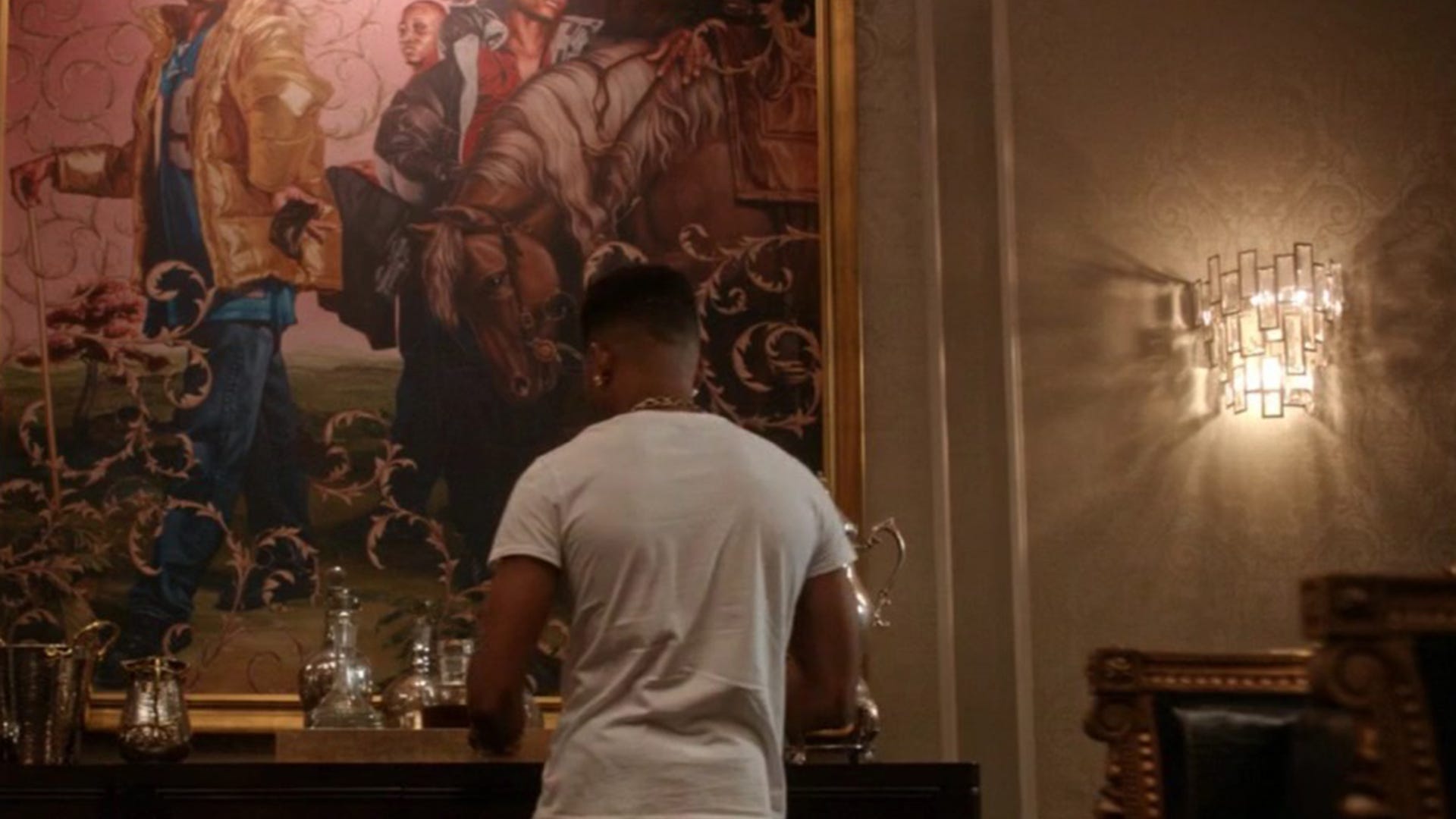Join or Sign In
Sign in to customize your TV listings
By joining TV Guide, you agree to our Terms of Use and acknowledge the data practices in our Privacy Policy.
Here's Where You've Seen the Obama Portrait Artist's Paintings on TV
Kehinde Wiley's paintings are fit for a lion's den
Barack and Michelle Obama unveiled their official portraits in the second week February week, momentarily turning everyone on the Internet into instant art critics. Both portraits shun layers of conventions: by definition, the first black residents of 1600 Pennsylvania Ave. look different in their portraits than everyone before them, and they both chose African-American artists to paint them. Their portraits look nothing at all like any of the stiff, formal portraits to come before -- Mrs. Obama looking grey-ish and regal in her Amy Sherald painting and Barack draped in rich, lush foliage -- and as a result, the artists were household names for at least a day. While Sherald might've been lesser-known than the prodigious Wiley, his paintings should be be familiar, especially to people who watch Fox's Empire.
Here's When Empire and Crazy Nurse Claudia Return
Globally acclaimed for his portraits of African-Americans in naturalistic style that often references specific paintings by the Old Masters, Wiley has had several works on Empire. Series creator Lee Daniels reached out to Wiley in the early planning stages of the show for permission to use his work, promising Wiley that Empire would either be a "huge success or the biggest car wreck known to man," according to TIME. Wiley apparently didn't blanche at the pitch: his works are prominent in Empire's first blockbuster season.

Terrence Howard and Bryshere Gray, Empire
FoxWiley's 2013 piece "Prince Albert, Prince Consort of Queen Victoria,' grabbed attention in the first season: it's an eye-popping, practically electric piece featuring a young tattooed man whose boxers are showing, standing front of an ornate background. It's used in a scene in which Lucious Lyon (Terrence Howard) tells his sons they're in competition with each other to take over Empire records, helping contribute to the juxtaposition of a primal moment in ornate, exquisite surroundings. Another Wiley painting, "Officer of the Hussars," presents a young man on a horse holding a sword -- a totally apt acquisition for the living room of Hakeem Lyon (Bryshere Y. Gray) the hot-headed baby of the family hellbent on taking over the world.

Prince Albert, Prince Consort of Queen Victoria, Kehinde Wiley
Kehinde WileyThere's a clear correlation between Empire and Wiley's work; both are steeped in the bravado and remix-friendly hip-hop culture, and upend old notions about class, racial identity and the politics of power. (The paintings on Empire are fabulous fakes; set designer Caroline Perzan and her team printed and stretched replications.) Back in 2015, Wiley told TIME that Empire gave him "tons" of recognition, which helped change a conversation about art. "It's music, it's panache, it's love of art and bling. America is Empire. The surprise was that Empire is also seeded with levels of complexity that people had not expected."
Empire: Hakeem Lyon's 10 Most Annoying Moments

Empire
Fox